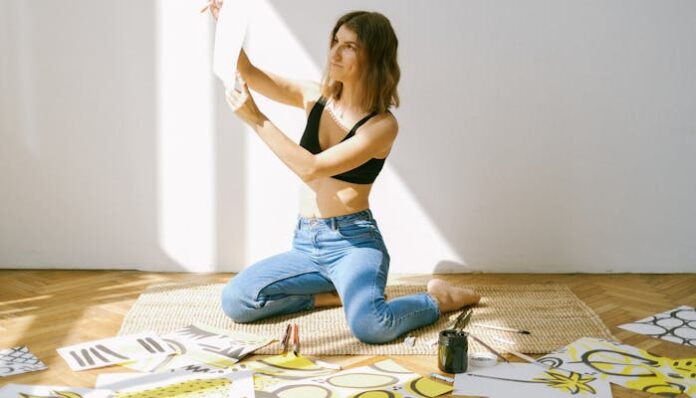
If you’re anything like me, you’ve undoubtedly experienced spurts of inspiration in the past but weren’t sure what to do with them. Perhaps you made something extraordinary in a video game or doodled on the edges of your notebook and thought, “Hey, this is kind of neat.” But after that, what?
Since I’ve been there, where something “kinda neat” developed into a passionate interest in design and art, I’d like to offer some advice on how to find and develop your own hidden talents.
1. Dive into Exploration
Exploration is your best friend when it comes to discovering your latent abilities. Don’t confine yourself to a single medium or style because there are so many different kinds of art and design. I was all over the place when I initially dipped my toes into the artistic pool, experimenting with digital painting on a rented iPad and trying to reproduce the Mona Lisa with my meager paint palette. It was a lovely mess, though. I learned something new about my tastes, my strengths, and my areas for growth with every try.
I eventually established my style in digital art through a lot of trial and error and YouTube lessons. So, grab whatever tools you can get your hands on and just start creating. You might surprise yourself with what you’re capable of.
2. Connect with Like-Minded Souls
Discovering a group of individuals who are passionate about the same things as you might significantly alter your artistic path. It was like finding my tribe when I joined a local group of painters who got together once a week to discuss their work and exchange skills. These were individuals who could provide helpful feedback, whose eyes brightened while discussing their most recent creation, and who recognized the challenges faced by a blank canvas.
I felt like I belonged here and was encouraged to push my limits by joining this group. We would sometimes work together on projects, share our most recent creations, and trade advice on how to get around creative blockages.
3. Master the Tools of the Trade
Diving into the tools specific to your art form can be a game-changer. It was when I stumbled upon Grasshopper 3D for architectural designs. Initially, the complexity of creating models through visual programming was overwhelming. Yet, as I dedicated time to learning its ins and outs, I designed with a freedom I hadn’t experienced before. Tools like Grasshopper 3D aren’t just software; they’re gateways to expanding your creative potential. They allow you to translate the wildest of your ideas into tangible designs.
My advice? Don’t shy away from the learning curve. Embrace it. The internet is brimming with tutorials for nearly every tool imaginable. Invest the time to master your chosen tools, and watch as they elevate your art to new heights.
4. Set Yourself Challenges
Pushing your boundaries through self-imposed challenges is crucial for growth. I distinctly recall assigning myself the goal of producing fresh digital art daily for a month. On certain days, I had no trouble coming up with ideas; on other days, it was like trying to get water out of a stone. But regardless of the result, the discipline of everyday production was immensely fulfilling. I was compelled to try out looks and methods I otherwise would not have.
Taking on tasks like these can quicken your learning curve, enhance your portfolio, and—perhaps most importantly—teach you how to remain resilient and creative under duress. Whether it’s a weekly poetry writing assignment, a daily painting challenge, or a monthly small sculpting project, these endeavors can serve as stepping stones toward mastery and mental well-being.
5. Reflect and Critique (Kindly)
Self-reflection is arguably the most profound and personal among an artist’s tools. I always make time to sit down and take a close look at my work after finishing a project. I consider what worked well, what didn’t go as expected, and what I could have done better the next time. This is about understanding and drawing lessons from your creative process, not about being too harsh or critical of yourself.
I used to get demoralized by the flaws, but now I regard them as indicators of improvement. This reflective process aids in creating attainable, realistic growth objectives. A physical record of your development as an artist over time is also immensely satisfying.
Nurturing your hidden talents is a journey filled with surprises, challenges, and much personal growth. It’s not just about becoming good at something; it’s about discovering a part of yourself that you might not have known existed. So, dive in, explore, connect, learn, and most importantly, have a blast doing it. Remember, every great artist started somewhere, and who’s to say that somewhere isn’t right where you are now? Let’s light that flame and see where it takes us.
Photo by Anna Shvets on Pexels


















